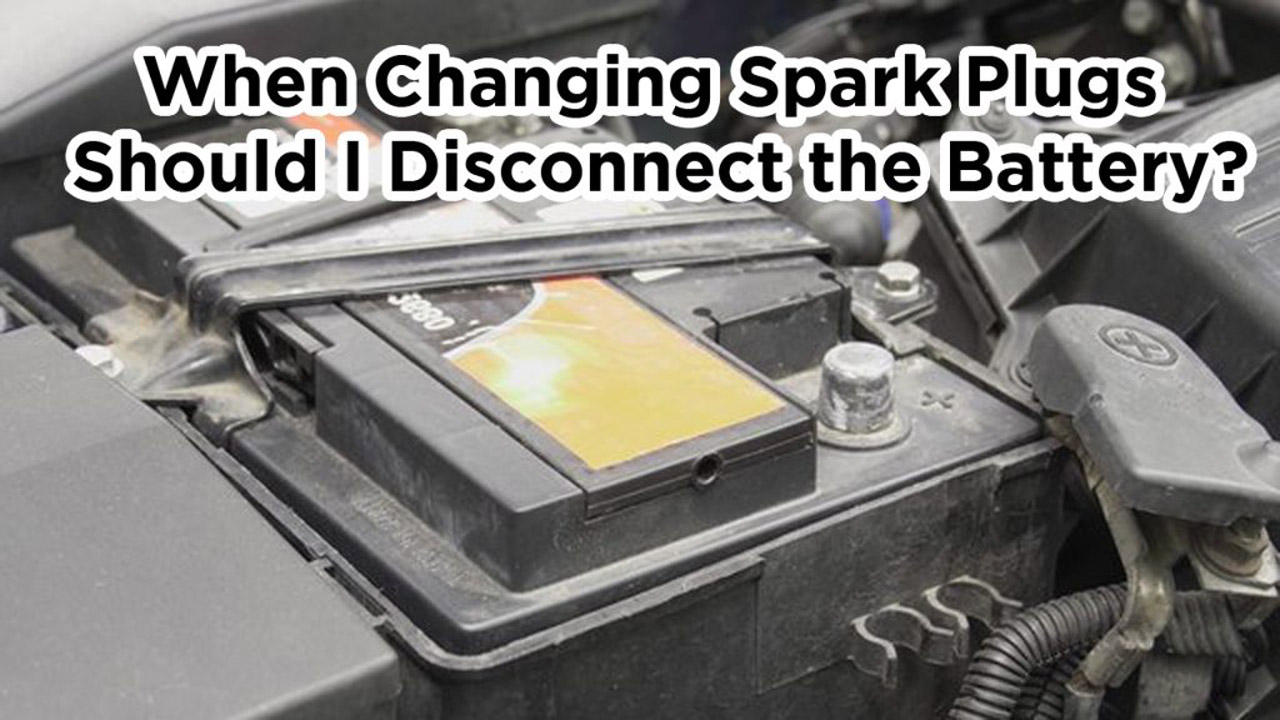Working on your car can be incredibly satisfying, but it also comes with a lot of questions, especially when it involves important components like spark plugs. One common query that pops up is whether you need to disconnect the battery when changing spark plugs. If you’ve ever wondered about this, let me break it down for you.
As someone who’s been through the process a few times, I understand the concerns. You don’t want to risk damaging anything, and safety is always a top priority. So, let’s explore whether disconnecting the battery is necessary and what other steps you should take to make the job smooth and safe.

Why Spark Plug Maintenance Matters
Before diving into the battery question, let’s talk about why spark plugs are so important. Spark plugs are the heart of your engine’s ignition system. They create the tiny spark needed to ignite the air-fuel mixture in your engine, powering your car.
If your spark plugs are worn out, you might notice:
- Rough idling.
- Reduced fuel efficiency.
- Trouble starting your car.
- Loss of engine power.
Replacing spark plugs regularly ensures your engine runs smoothly and efficiently.
Do You Need to Disconnect the Battery?
The short answer is yes, it’s a good idea to disconnect the battery when changing spark plugs. While it’s not always required, doing so adds an extra layer of safety and prevents accidental electrical issues. Let me explain why.
Safety First
Disconnecting the battery eliminates the risk of an accidental short circuit. While changing spark plugs doesn’t directly involve the electrical system, tools or hands can accidentally touch live wires, leading to sparks or damage.
Protecting the ECU
Modern vehicles rely heavily on their Engine Control Unit (ECU). The ECU controls your car’s electronics and stores important data. Power surges or shorts can potentially harm the ECU. Disconnecting the battery helps avoid any electrical mishaps that could disrupt the ECU.
Steps to Safely Disconnect the Battery
If you decide to disconnect the battery, here’s how to do it the right way:
- Locate the Battery: Usually found in the engine bay, but in some cars, it’s under the rear seat or trunk.
- Use Proper Tools: You’ll need a wrench or socket to loosen the terminal clamps.
- Disconnect the Negative Terminal First: Always start with the negative (black) terminal. This minimizes the risk of short circuits.
- Disconnect the Positive Terminal: Next, remove the positive (red) terminal.
- Secure the Terminals: Tuck the cables away so they don’t accidentally touch the battery while you work.
Pro Tip: If you’re worried about losing settings like radio presets, consider using a memory saver device that plugs into the OBD-II port before disconnecting the battery.
What Happens If You Don’t Disconnect the Battery?
While it’s possible to change spark plugs without disconnecting the battery, skipping this step could lead to potential risks:
- Accidental Sparks: Metal tools could create a spark if they come into contact with live components.
- Damage to Sensitive Electronics: Modern cars have delicate sensors and circuits that could be affected by accidental electrical contact.
- Personal Safety Risks: Electrical shocks are rare but not impossible, especially if there’s a fault in the system.
How to Change Spark Plugs Safely
Now that we’ve covered the battery question, let’s go over the process of changing spark plugs step by step.
Tools You’ll Need
- Ratchet and spark plug socket.
- Torque wrench.
- Spark plug gap gauge.
- Anti-seize compound (optional).
- Dielectric grease.
Step-by-Step Process
- Prepare Your Workspace: Park the car on a level surface, allow the engine to cool, and disconnect the battery.
- Locate the Spark Plugs: Refer to your owner’s manual to find the spark plug locations.
- Remove the Ignition Coil or Wire: Carefully disconnect the coil or wire attached to each spark plug.
- Remove the Old Spark Plug: Use the spark plug socket to unscrew and remove the plug. Inspect it for wear or damage.
- Check the Gap on the New Plug: Use the gap gauge to ensure the new spark plug’s gap matches the manufacturer’s specifications.
- Install the New Spark Plug: Screw it in by hand first to avoid cross-threading, then tighten with a torque wrench.
- Reattach the Coil or Wire: Connect it back securely.
- Reconnect the Battery: Attach the positive terminal first, then the negative.
Common Mistakes to Avoid
When changing spark plugs, a few missteps can cause unnecessary headaches:
- Over-Tightening: This can damage the spark plug threads or the cylinder head.
- Forgetting to Check the Gap: Incorrect gaps can lead to misfires or reduced performance.
- Not Using a Torque Wrench: Proper torque ensures the plugs are tight but not overdone.
Benefits of Disconnecting the Battery
Here’s a quick table summarizing why disconnecting the battery is a smart move:
| Benefit | Explanation |
|---|---|
| Eliminates risk of electrical shock | Prevents accidental contact with live wires. |
| Protects electronic systems | Shields the ECU and sensors from potential power surges. |
| Safer working environment | Reduces risk of accidental sparks. |
Does Battery Disconnection Affect Car Settings?
One concern with disconnecting the battery is losing saved settings like:
- Radio presets.
- Seat memory settings.
- Clock settings.
These can usually be reset easily. If you want to avoid this inconvenience, use a memory saver device during the process.
Final Thoughts
So, should you disconnect the battery when changing spark plugs? I’d recommend it. While it’s not absolutely necessary, it’s a small step that adds extra safety and peace of mind. Your car is an investment, and taking precautions ensures it stays in great shape.
Changing spark plugs is a relatively straightforward task, but doing it carefully and correctly is what makes the difference. Whether you’re a DIY enthusiast or someone just starting to explore car maintenance, following these tips will help you get the job done right.
FAQs
Why do I need to disconnect the battery when changing spark plugs?
Disconnecting the battery prevents accidental electrical contact, protecting both you and your car’s electronics.
What happens if I don’t disconnect the battery?
There’s a risk of sparks, damage to sensitive electronics, or personal injury if tools accidentally touch live components.
Can I use a memory saver when disconnecting the battery?
Yes, a memory saver keeps your car’s settings intact while you work.
How often should spark plugs be replaced?
It depends on the type of spark plugs. Iridium or platinum plugs can last up to 100,000 miles, while copper plugs may need replacing every 30,000 miles.
Do I need special tools to change spark plugs?
A spark plug socket, ratchet, and torque wrench are essential. A gap gauge and dielectric grease are also helpful.


